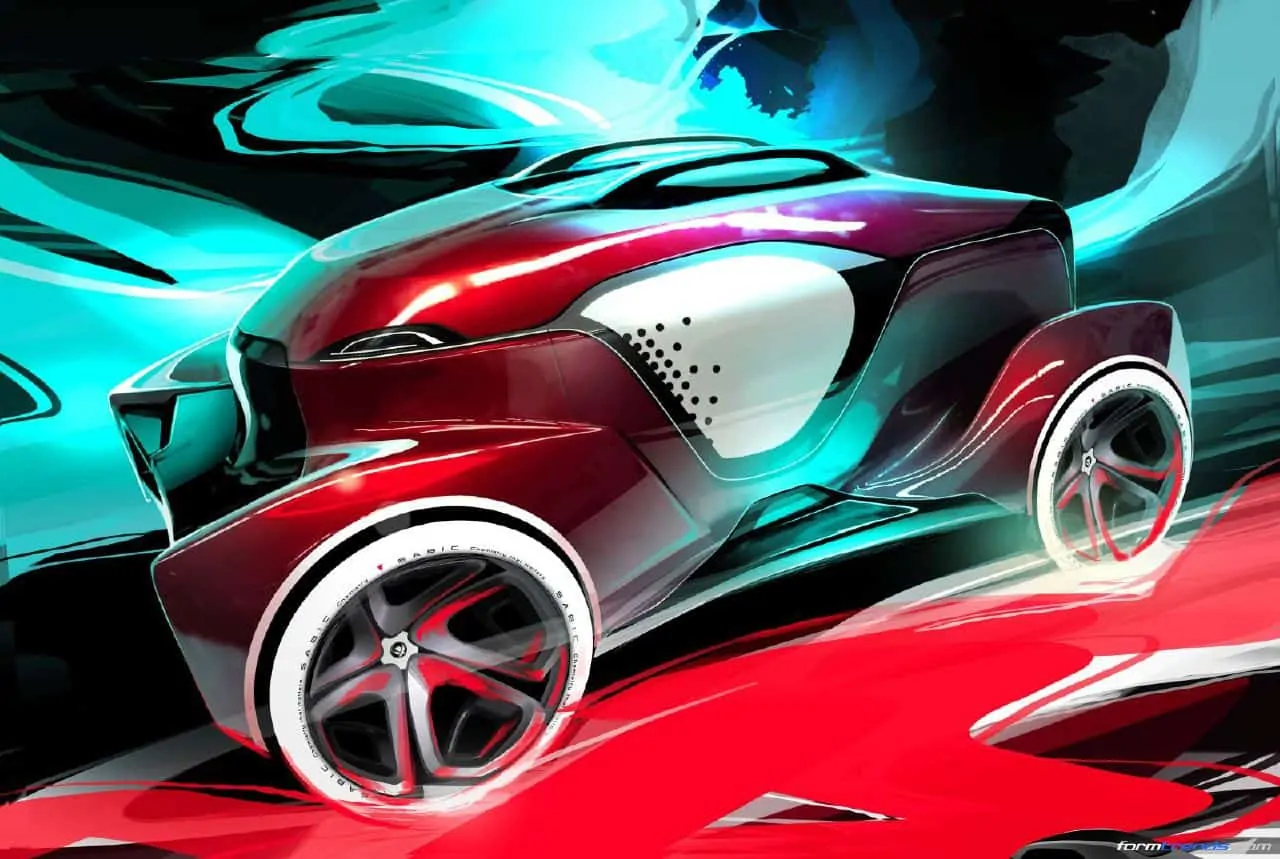Vrum Concept
Targeted at developing countries and regions such as Southeast Asia, Richard Yoh’s Vrum concept is designed so its driver connect in a physical way to a motorized force. Even in an age of autonomous technology, the thrill of driving can be retained.
The vehicle’s aesthetic is based on the simple, yet fluid lines of a modern kayak, while the chassis sub frame, the interim middle suspension structure and the one-piece body that sits atop the chassis, are made of plastic. The suspension structure concept was also used in the wheel-tire combination.
DUO Concept
Heewon Seo’s DUO is designed for personal mobility in an urban setting. This single-seat vehicle can be driven, but it also offers autonomous capability.
DUO refers to the dual driving capability. The vehicle also has two modes: a two-wheel urban mode, in which the front-wheels-cum-canopy decouple from the main structure and operate as a personal Segway-style means of transport; and a four-wheel sports mode for use on weekends to escape the inner city and explore the open roads or take on dedicated race tracks.
Seo used polycarbonate as a frame to support the vehicle’s main frame and as opaque glazing.
Galapagos Finch Concept
Industrial Design student Mochi Chi based her interior-focused adventure concept on the Galapagos Finch species, known for its ability to adapt very rapidly to its environment.
The vehicle features a large, adjustable ‘window to the world,’ which can change from fully transparent to frostily translucent and to fully opaque at the flick of a switch or tap of a screen. Chi sandwiched an OLED and frosttine layer to create the twin layers of next-generation polycarbonate
The interior includes a woven polymer air mattress with built-in vacuum to inflate or deflate as needed, while the shelving is made of special texture-coated plastics. The vehicle’s floor is a semi-foamed closed cell plastic.
Escaper Concept
Jake Lee’s Escaper concept is a two seat autonomous vehicle that allows its passengers to escape the city for weekend adventures.
This vehicle offers Gen Aers the ability to disconnect from being connected all the time and features an advanced foam structure to reduce weight.
A synthetic flexible plastic with electric conductor particles allows for the use of a smaller battery while the light transmitting plastic for outboard side lighting has an adjustable transparency.
Hope Concept
Sangwon Jo’s Hope concept offers basic functional transportation for developing countries like those in central Africa. First world countries donate recycled plastic for the vehicle’s construction.
The vehicle’s layout incorporates an overhead structure from which individual seats can be suspended. This enables a highly variable seating layout and easily allows individuals to ‘hitch a ride’ by attaching their seat onto the vehicle’s roll bar structure.
Plastics are used in the main one-piece body in which all the driveline components are attached and suspended from front and rear locations. The tires and wheels are made from new plastics to reduce conventional failures in current tire technology.




























